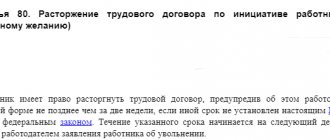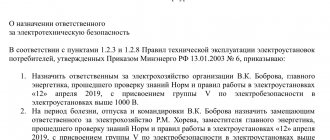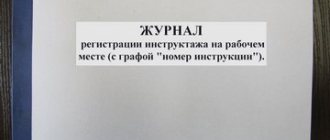Legislation: what regulates the procedure?
Among the important ones it is worth noting the following sources:
- articles of the Labor Code of the Russian Federation number 242, 243, 244;
- RF PP No. 823 of 2002;
- Ministry of Labor Decree No. 85 of 2002;
- Order of the Ministry of Finance No. 34n of 1998.
Be sure to refer to local regulations established and formalized accordingly.
Here are some examples of documentation you can use:
- Order to change the person responsible for the property.
- The act of acceptance and transfer of valuables.
- Inventory report.
One order also contains information regarding the inventory being carried out.
Participation in inventory
Only members of the commission can participate in the inventory (meaning, recalculation of the MC). There must be a responsible person present, under whose report the values are located, but he is not included in the commission, since his work is checked. The storekeeper gives a receipt stating that all receipts and expenditure documents were given to the accountant, and in the process of carrying out verification activities he gives the necessary explanations.
To the question whether a financially responsible person can carry out an inventory, we answer: he can in cases where the inventory being carried out does not concern the scope of his responsibility. For example, an employee of a workwear storeroom may be included in the inventory commission when replacing an employee of a spare parts warehouse.
- Inventory when changing the financially responsible person
- Sample order for additional payment to the minimum wage 2019
- Order for inventory upon dismissal, sample filling
- Carrying out an inventory when changing the financially responsible person
How is the procedure for changing the materially responsible person organized?
Financial liability is a designation for the obligation of subordinates to compensate for damage to the employer if this happens. The assignment of such responsibility requires the execution of orders by the manager. Several conditions and circumstances are associated with the change of MOL:
- obtaining another position;
- dismissal;
- circumstances of a similar nature.
First, an inventory is organized. Then they formalize the receipt and transfer of the financial flow along with other valuables.
Execution of an order from the director remains a mandatory requirement, regardless of the grounds and conditions. There is no unified form of the form; each organization has the right to choose its own option. It is acceptable to use existing forms.
A shift order is not the only document drawn up during transfer. After this order is issued, a standard agreement valid for such situations is signed with the new employee. The agreement is used to fix financial responsibility. The latter can be complete or partial.
The lack of unified forms leads to negative consequences for employers. A document is likely to be declared illegal if there are no written reasons for the decision.
To record the purpose of the MOL, the following documents are used:
- local regulations of the company;
- job descriptions;
- additions to the agreement;
- execution of an order for the change of persons.
The following set of details is required for the document:
- Description of the candidate for the specified position.
- The very word “I command”.
- Goals and reasons for organizing the procedure.
- Title of the document.
- Name of the institution.
- The order can separately appoint a person responsible for fulfilling the requirements and instructions. The signature of the manager and the date of preparation of the document are required.
- The order also specifies the new employee and the subordinate who is responsible for control.
- It is necessary to indicate the initials of the specified citizens along with a transcript and positions.
Useful video
The procedure for conducting an inventory and the necessary documents is described in detail in this video:
The article describes typical situations. To solve your problem , write to our consultant or call for free:
+7 (499) 490-27-62 — Moscow — CALL
+7 — St. Petersburg — CALL
+8 ext.849 — Other regions — CALL
Dismissal and other circumstances may become the basis for conducting an inventory when changing the financially responsible person (hereinafter also referred to as MOL). The procedure for its conduct and registration is regulated in detail by the legislation of the Russian Federation. The result of such an inventory may be surpluses or shortages. How to properly conduct such an inventory and document its results will be discussed below.
The act of transferring from one person to another
The acceptance certificate is drawn up when the inventory is carried out and completed, all documents are drawn up. You can use the standard form with the designation OP-18. But it is permissible to use free options.
The transfer and acceptance certificate must display the following information:
- Personal signatures of all responsible persons, with the addition of a transcript. Last names and initials or other information for personal identification are required.
- A list of transferred values, for which the main characteristics, articles, quantities, and names are described.
- Full name and position of the MOL itself - new and old.
- Name of the form.
- Full name of the company responsible for the document.
- Date of completion.
- Title of the document.
Data allows you to add to the document or get rid of unnecessary things. In the accounting policies of organizations, they write what form of document they use to resolve the issue.
urist-consultant.ru
Verification of the actual availability of property is carried out with the obligatory participation of materially responsible persons.
In addition to mandatory inventories, the organization can also conduct audits, both scheduled and unscheduled. An audit also implies a check of the economic and financial activities of an organization, but, unlike an inventory, the procedure for its implementation is regulated by individual industry instructions, charters of companies, and local regulations of organizations. Neglecting the standard form of the document can play a cruel joke on the employer, since such an order may be declared invalid in the event of litigation, which, unfortunately, is not uncommon in the field of servicing material assets.
Inventory of fixed assets
Inventory is an action by the employer that involves checking the safety of existing property. Or the presence or shortage of valuables is verified.
The procedure is organized in the interval between the dismissal of an old employee and the hiring of a new employee.
The first step is the preparation of documents that become the basis for hiring new employees for a position. After this, actions are performed in the following sequence:
- They issue an order that clearly states inventory.
- A date is set.
- Appoint members of a commission vested with appropriate powers.
The order sets a day for the gathering of interested parties where the valuables are stored:
- newly hired employees;
- someone who is about to quit;
- members who made up the commission.
Afterwards, an inventory check report is drawn up, depending on how the circumstances develop. The first part is the introductory part of the act, where the following information is indicated:
- Reason for compilation. For example, the fact of transfer of property.
- Composition of the commission.
- Time and place of compilation.
- Title of the document.
Previous acceptance acts and regular inventory are used to compare available information.
The list of goods or other valuables is copied from papers compiled earlier. A list is compiled on the basis of which the contents of the warehouse are studied. Or another storage location, if provided by the current place of work.
The basic part of the document also contains a whole range of information:
- for each inventory item a separate serial number is indicated;
- name of inventory units;
- quantity depending on the units of measurement used;
- information about the presence of property or its absence;
- signatures of both parties - both the one receiving and the transmitting.
The last one is the date of the event. The main thing is that it coincides with the information present in the order. The signatures of the parties and members of the commission certify the authenticity of the information.
Detection of a shortage leads to liability on the part of the citizen transferring the property. Acceptance is carried out only if all valuables are in place.
How does the transfer of cases take place?
After submitting an application to resign from a position temporarily or due to dismissal, it is required to draw up documentation on the basis of which the resigning employee responsible for property transfers affairs to his successor . As a rule, within two weeks allowed for working off upon dismissal, the employer finds a new applicant for this position from among the applicants.
An employee newly hired under an employment contract accepts material assets according to the acceptance certificate. Accordingly, the person resigning transfers them.
If during the designated period no successor was found from among the applicants or other employees of the organization, the employer does not have the right to delay the dismissal of the employee .
The work book, with an entry about dismissal, must be returned on the last working day.
Before this period, a replacement from among the newly employed may not take place, which requires the employer to take the following legal actions:
- Appoint a financially responsible person from among the organization’s full-time employees.
- Confirm the appointment by order.
- Transfer to an authorized employee by conducting an inventory all existing valuables.
- Dismiss the financially responsible person.
- Accept a new employee by concluding an employment contract and a liability agreement with him.
- Draw up a new order, on the basis of which the intermediate employee authorized to store property transfers material assets to the newly hired person.
- Registration of the acceptance procedure with an act.
The transfer of powers of property responsibility can only be assigned to adult employees.
You can learn more about how a financially responsible person is appointed in an organization in this article.
Registration of an order for an inventory
First, you need to fully define the concept of financial responsibility and the persons who fall under its action. Full liability is assigned only under certain conditions:
- The need to protect against the disclosure of important information and secrets.
- The likelihood of property damage in the event of failure to fulfill obligations, full or partial.
- In the presence of illegal misconduct due to which the employer’s property suffers.
- Damage caused intentionally or while intoxicated.
- When identifying a shortage of valuables that were entrusted to the employee on the basis of any agreements.
Inventory procedure
The verification of values is carried out on the day of transfer of cases from one MOL to another. The stages of preparation for an operation do not differ from the preparatory processes for any type of inventory, i.e.:
- An order from the manager is issued indicating specific dates and the staffing of the commission;
- The accountant takes into account all the submitted receipts and expenditure documents and displays the balances for the items of property for which the warehouseman handing over the files is responsible, forming an inventory list in terms of documented balances;
- The commission carries out an inventory through continuous recalculation, weighing and measurement of existing valuables (MV). If it is impossible to measure the volume of transferred materials in a continuous manner, they are recalculated selectively. This happens, for example, when there is a change of foreman in construction, during the transfer of unfinished objects, where it is impossible to make a complete count due to large volumes of production;
- At the end of the inventory, information about the actual availability of MC is entered into the inventory, and the results are compared.
Dismissal of financially responsible persons
The general provisions that make up the Labor Code apply to such procedures. Employees remain obligated to notify management of their desire to leave at least two weeks in advance. But the agreement with the employee may contain additional conditions related to the dismissal itself. The main thing is that the citizen’s situation does not get worse after the document is issued.
Article 84.1 contains a description of the general provisions according to which dismissal takes place in such circumstances. First, a citizen submits an application, then works for two regular weeks. On the last day, he is given a work book along with all due compensation.
It is unacceptable to delay the procedure for transferring material assets from one employee to another. Laws prohibit delaying final settlements with an employee and the issuance of all due money. For this, the employer is held accountable, monetary and administrative. Sometimes the punishment is suspension of the company's work for a certain time.
Is it necessary to carry out an inventory when changing the chief accountant?
Inventory after the dismissal of the financially responsible person - the chief accountant - should be carried out only if an agreement has been concluded with him on complete swearing. responsibility.
When such an agreement is concluded, we are talking about changing the employee who is financially responsible. And in such a situation, the organization must conduct an inventory without fail.
Dismissal of a financially responsible person without conducting an inventory is possible only if the person has not entered into such an agreement with the company. However, if desired, an audit can still be carried out if the accounting policy provides for it.
Detection of shortages: what to do?
Only the results of the inventory will show whether there is a shortage of material assets and how significant it is. The verification results are compared with actual balances. If a shortage is detected, several consequences arise:
- The organization assembles a commission, whose members identify the reason for the difference between the actual values and those indicated in the original documents. Separate work is underway to identify the guilty employees. Without evidence, managers cannot make claims to their subordinates, which is why it is necessary to organize a comprehensive investigation. Without an investigation, employees are more likely to appeal the decision, even if there is actual guilt.
- The employee himself draws up an explanatory note, which indicates the reasons why the shortage arose.
- The commission draws up an act and hands over the document to the employee for review. The subordinate signs this act to at least confirm the event itself. In case of refusal, witnesses are collected. This will serve as proof that you have read the information.
- The shortage is translated into monetary terms, based on prices in effect at the time the problems were discovered. You can do without going to court if the result is no more than the average monthly remuneration for labor.
Drawing up an order in any form
An order to conduct an inventory can be drawn up in any form. However, there is a list of information and details that must be indicated in the official document:
- company name;
- date of preparation and document number;
- objects and purpose of the inspection;
- list of departments involved;
- period;
- deadlines for providing results;
- composition of the commission indicating the last names, first names, patronymics and positions of each of its members;
- last name, first name, patronymic and signature of the manager.
Summarizing
So, after the commission has finished taking inventory, a meeting should take place. During it, the main results and identified discrepancies are determined. The cause of the discrepancies and ways to correct the situation must also be established. Based on the results, minutes of the meeting are drawn up. Typically, this document has the following structure:
- name of the company indicating the organizational and legal form;
- the name of the unit where the inventory was carried out;
- name of the document - protocol of the inventory commission;
- list of commission members indicating surnames, initials and positions;
- description of the test results;
- list of speakers at the meeting;
- decision;
- conclusion of the commission;
- identified violations (if any);
- those responsible for the violation, indicating their surnames, initials and positions;
- information about measures to eliminate violations;
- signatures of the chairman and all members of the commission;
- applications.
As an illustration, we will give a fragment of the protocol.
To easily draw up such a document, you can download the sample minutes of the meeting attached to the article.
The following documents may be attached as attachments to the minutes of the meeting:
- acts and inventories of the inventory carried out according to INV forms for each materially responsible employee, facility, warehouse or division;
- list of products unsuitable for further use;
- a list of missing or excess products with an indication of price;
- explanatory notes from financially responsible employees or other officials.
Read more Find out mobile number using passport data
We would like to add that at the meeting the commission must make the following proposals:
- on the timing and methods of eliminating shortages, as well as on conducting internal investigations (if a shortage is detected);
- on the continued use of outdated and unsuitable products for subsequent use;
- other proposals regarding work with inventory items.
If no violations were found during the inspection, then there is no need to draw up an inventory protocol.
Based on such a protocol, the manager issues an order based on the results of the inventory, a sample of which can be downloaded for free below.









